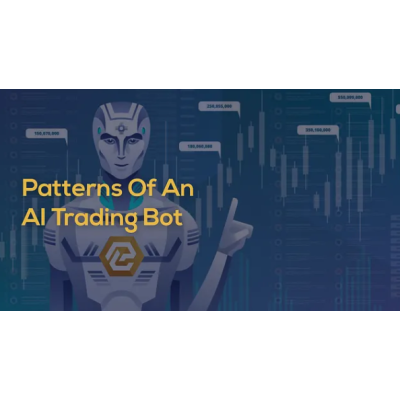

Hello, the below segment is part of our August Report. Inside you can see how our AI trading bots demonstrate the patterns from the article in real-life trades. You can also get an overview of the most recent macro and crypto-economic news, as well as our other in-depth research. Read here.
The markets are constantly evolving, and your AI is always competing with thousands of other traders and trading robots around to world. From here onwards there is only one important metric that you as an investor using AI bots should care about — performance over the long run.
If your trading robot earns money and protects during bear markets, then the technology is doing its thing, simple as that.
To completely understand the behavior of your trading AI bot we’ve introduced three innovative patterns that go by the names “sticking”, “folding” and “shadowing/mimicking”. Let us look at what each one of them means with examples.
Sticking is the main pattern you can observe in most trading AIs of different companies and even cryptocurrency funds. At its core, it is not different than a simple index-following pattern.
When you look at a graph where your investment is following at a 1:1 ratio the performance of an asset (literally sticking to it), it is a sticking pattern.
When it comes to One Button Capital’s trading bots, you will most likely see this pattern in the initial days of running a strategy. Your bot may or may not buy into the market pair it is launched against, but once it does, it will just follow the coin’s performance to the dot.
After fully adapting to the live market, AI is ready to begin its journey in trying to beat the market. For that, he needs one key component — folding.
Have you ever wondered how a strategy could outperform the market over the same time period? It is quite simple. If your bot, for example, followed the asset in a “sticking” pattern, as a passive index fund would, it would never be able to outperform the performance, as it would only return 1:1 the amount invested. The key here is knowing when and how to “fold.”
Once your AI detects a signal that the coin can go down, it will immediately sell its position and convert it into fiat or stablecoins.
By doing that, the bot can protect the gains from the uptrend, thus automatically getting a better return than the market when it goes down.
Additionally, the saved capital is ready to be used at the next favorable moment. That is the most powerful moment when a bot shines.
Now that your bot has successfully gained an edge over the market, it is time to enter the endgame. The AI will transition to a pattern that looks like “sticking” but with an amplitude in the ROI. Essentially, the bot will “mimic” the asset’s performance, leaving the coin in its shadow.
If the markets are moving in an overall uptrend, the bot might decide to play it safe and ride the bull run, keeping its edge over the underlying asset. If it detects a high probability signal for a small “folding” opportunity, it may take it in return for an additional edge over the market. If it senses an upcoming trend reversal, it will try and sell the positions on time.
Although artificial intelligence can provide an advantage over other investment strategies, understanding how it works can be challenging. While OB Capital’s AI bots’ trading strategy falls under technical analysis, attempting to read your bot’s behavior through traditional patterns is both flawless and inaccurate.
The AI has only one goal: to outperform the market pairs it trades. The decisions it makes can be unpredictable and feel unhuman sometimes, but the end result is what matters most. To get a sense of how your bot compares to the market, we introduce three distinct patterns: “sticking,” “folding,” and “mimicking/shadowing.”